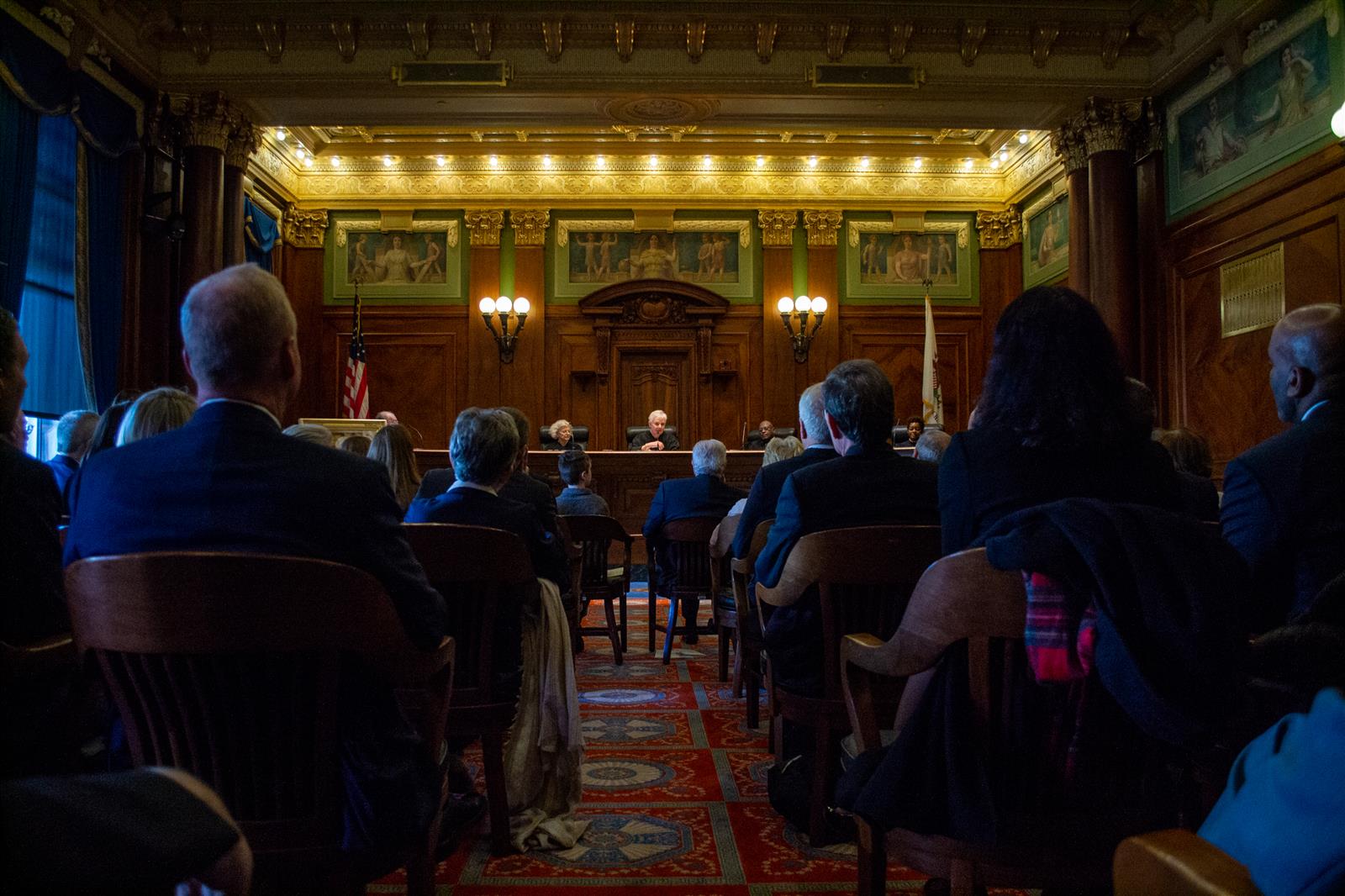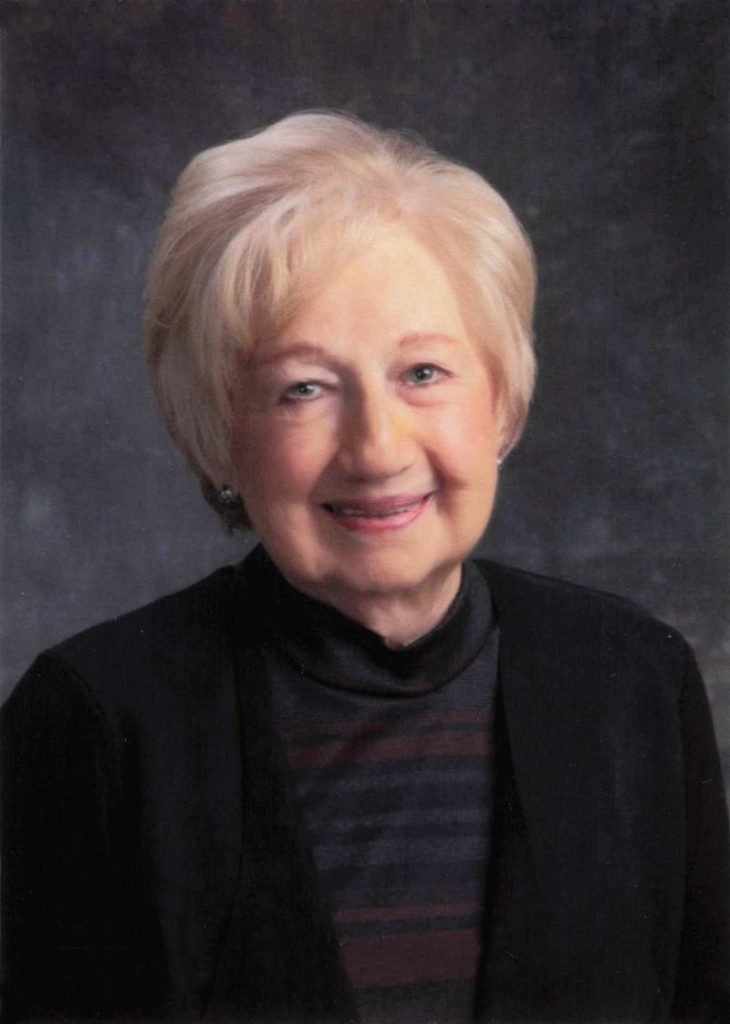Illinois’ high court makes history; majority-female court is first ever

While a crocheted serpent took its place on the Capitol rotunda this week and the governor signed a pair of major bills passed in the recent veto session, history was happening on the Illinois Supreme Court.
For the first time in its history, the state’s high court is made up of a majority of women judges.
And it’s by a 5-2 margin.
Justices Elizabeth Rochford and Mary Kay O’Brien were sworn in Monday. The two Democrats were both elected to the high court in November. Justice Joy V. Cunningham, who was appointed to replace retired Justice Anne M. Burke, was sworn in on Dec. 1.
The new justices join Lisa Holder White, who was sworn in as the court’s first Black woman justice on July 7. Cunningham became the second, bringing the number of Black justices on the Supreme Court to three, also a high-water mark for the institution.
Fittingly, the historic court will be led by Chief Justice Mary Jane Theis, who officially assumed that title in October, following Burke and becoming the fourth woman chief in the court’s history.
She’s been on the court since 2010, and ascended to the top spot by the court’s standard process, which gives the gavel to longest-tenured justice who hasn’t yet held it.
She’ll preside over a court on which four of its seven members have been seated for less than six months.
“In my life story, I am not a trailblazer. I am not Mary Ann McMorrow, who was the first woman on our court,” she said. McMorrow was first elected to the court in 1992.
Theis added, however, that while she was a public defender in Cook County early in her law career, she was one of three women in the Cook County criminal bar.
“To say I was the only woman in the room is absolutely true for a very long time in my career, even when I went on the bench,” she said. “There were very, very few women. But there were some. And as we moved along, there were many more behind me.”
Diversity on the bench, Theis said, is both enriching to deliberations and important from a symbolism standpoint.
“It wasn’t that long ago when Charles Freeman was the first African American on this court. He joined the court in 1990,” Theis said. “But he was the only African American up until 2018 and then Scott Neville joined this court.”
Neville remained the only Black justice until he was joined this year by Holder White and Cunningham.
“Suddenly, we’re now going to have three people (on this court) that are people of color,” Theis said. “It says something about our state and something about our court that we’ve evolved to such a place that we can have that diversity.”
For all the historic progress on the court’s diversification, Latino judges continue to be underrepresented on the high court and the appellate courts directly below it. While Illinois is 18 percent Latino, the Illinois Latino Agenda noted in a news release, there’s just one Latino appellate justice and none have ever served on the high court.
Groups like the Puerto Rican Bar Association have also continued to call on the high court to appoint Latinos to court vacancies at the appellate and Supreme level.
I didn’t directly ask Theis about the lack of Latino representation in state courts, but she did speak to the importance of all Illinoisans being represented.
“In my experience…when there are people with different backgrounds and different life experiences, they bring something to the table, they enrich the discussion, they enrich the opinions that we make,” she said.
While Theis said she’s invigorated by the new court and the experiences and worldviews its new members will bring to the bench, she described the challenges of the court’s turnover as “innumerable.”
“It’s just four new people starting a new job,” she said. “We have to really spend some time talking together, first of all, just about the history and traditions of how the court circulates opinions and real practical things like that. But I’m looking forward to some conversations with the new court as to what they want.”
One place the new justices will bond is the Supreme Court’s dining hall. When in Springfield, the members of the high court stay in living quarters above the court chamber and eat all or most of their meals together with the chief at the head of the table.
“The idea being that you get to know people, and you find out all about them,” Theis said. “And, you know, you talk about the Bears. Or you talk about the weather. Or you talk about whatever you’re going to talk about. And you get to know people and respect people. And then when you go to make decisions, there’s this sense of respect. And when you disagree, it comes from a place of respect.”
There’s also another considerable shift on the court – its 4-3 Democratic majority of recent years has grown to 5-2.
For Theis, that doesn’t mean much.
The only disagreement over party she had with outgoing Republican Justice Michael Burke, she said, was that he’s a White Sox fan and she hails from “the shadows of Wrigley field.”
“There is no partisanship, unless you want to say sports partisanship,” she said.
The 18 decisions released by the court last month back up her claim. None were decided on partisan lines.
Miss Clipping Out Stories to Save for Later?
Click the Purchase Story button below to order a print of this story. We will print it for you on matte photo paper to keep forever.

